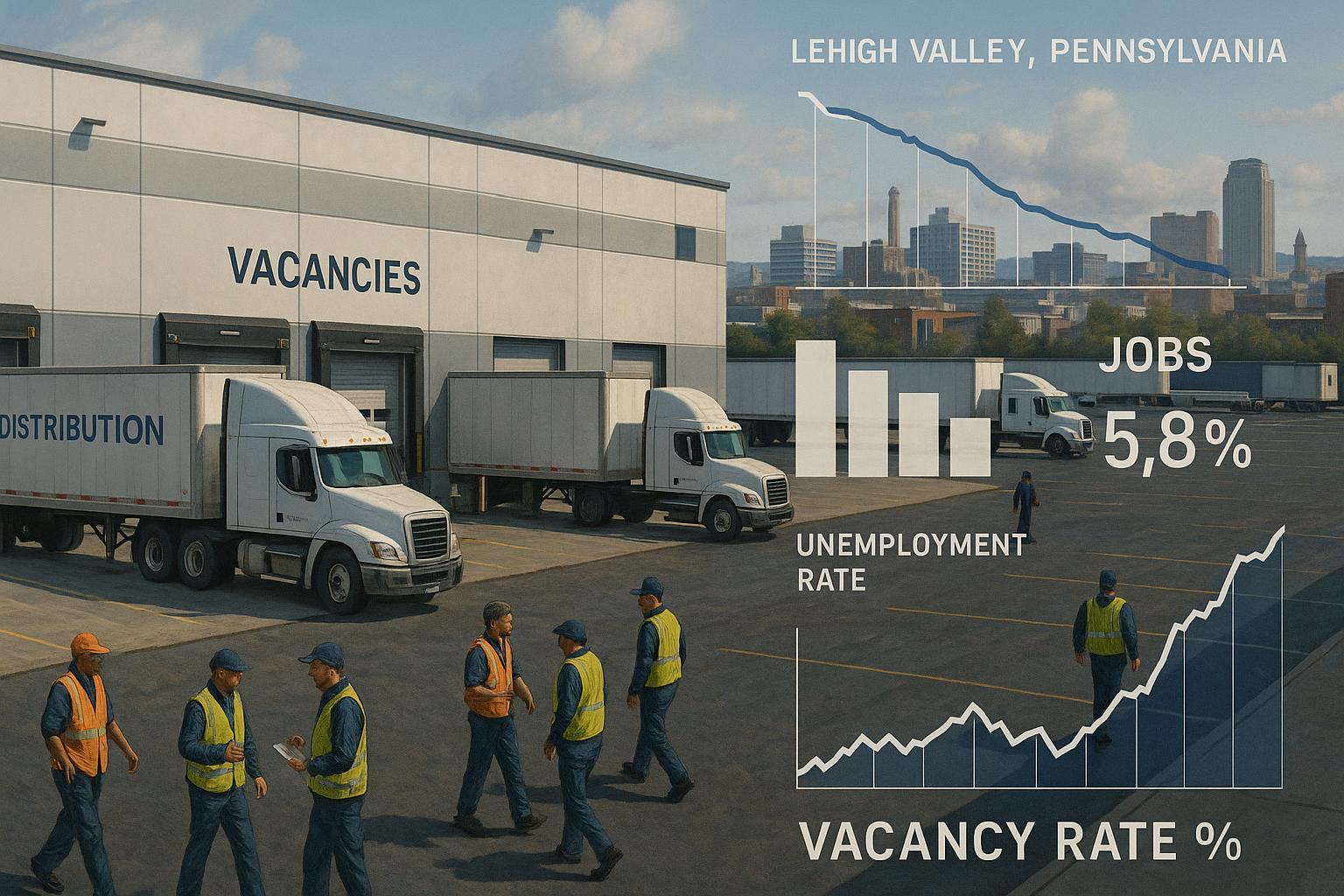The Impact of the Lehigh Valley Distribution Center on Local Economy and Job Growth (2024–2025)

Lehigh Valley’s Distribution Sector: At a Crossroads in 2024
Just as Lehigh Valley earned a reputation as a logistics powerhouse, a wave of recent events is reshaping the region’s economic narrative: major warehouse closures (over 100 layoffs), new facility launches (adding 100–200 jobs each), and a dramatic slowdown in new construction. For policymakers, communities, and business leaders, the urgent question is: can the Lehigh Valley distribution center ecosystem continue to drive sustainable job and economic growth—or is a strategic pivot required?
Economic Engine with Volatility: The Numbers Tell a Story
The Lehigh Valley economy has long leaned on warehousing and logistics, contributing to a regional GDP that topped $55.7 billion in 2023 (source). In recent months, however, local headlines have been split between painful layoffs—with DHL’s Supply Chain Solutions LLC facility closure alone displacing over 100 workers (The Morning Call)—and the opening of new facilities like Filter King and GSK, each promising 100–200 new jobs.
But the pipeline is noticeably thinning: 2024’s total new warehouse development in Lehigh Valley dropped sharply to just 317,000 square feet, down from 4.1 million in recent years (Lehigh Valley Ramblings). This rapid swing creates acute economic uncertainty, especially for lower-skill workers vulnerable to displacement.
The New Reality: Fluctuation and Automation
Why the sudden cooling? According to Becky Bradley of the Lehigh Valley Planning Commission, these shifts reflect both “market saturation and a new era of rational, policy-driven planning.” Land constraints, tighter zoning, and infrastructure limits all play a role (LVPC Statement).
More consequentially, automation and advanced logistics technology are beginning to curb demand for traditional roles. Local planners and economists warn that the next cycle of warehousing will likely be less labor intensive, with greater demand in technical, logistics management, and equipment maintenance jobs—leaving fewer opportunities for the broader labor force ([LVEDC 2025 Q1 Commercial Real Estate Report, not yet public]).
The Human Impact: Workforce and Community Response
For workers and the wider community, the churn is palpable. The 2024 DHL closure and others led to abrupt job losses—though some relief arrived via coordinated retraining and job placement initiatives through CareerLink and Northampton Community College. These programs are gaining momentum as cities brace for continued oscillation between new employment announcements and layoffs (LV Live).
Community sentiment leans mixed to wary: while polls show optimism about general quality of life in Lehigh Valley (Muhlenberg College Poll), residents remain anxious over the pace of industrial churn, loss of lower-skill opportunities, rising housing costs, and the long-term sustainability of such a singular economic focus.
Data Snapshot: Jobs, Facilities, Trends (2024)
| Event/Factor | Recent Stats/Developments | Source |
|---|---|---|
| Major Warehouse Layoffs | 101+ (DHL, others) | The Morning Call |
| New Facility Job Creation | 100–200 per site (Filter King, GSK) | Lehigh Valley Live |
| Total New Warehouse Space (2024) | 317,000 sq. ft. | Lehigh Valley Ramblings |
| Lehigh Valley 2023 Regional GDP | $55.7B | The Morning Call |
What’s Next? Strategic Outlook and Action Steps
Near-term: Continued fluctuations are likely, with employment opportunities shifting toward more specialized roles. Those with warehouse skills are urged to pursue retraining programs now available through local community colleges and state-sponsored initiatives.
Longer-term: The regional economy must diversify, investing in high-value manufacturing, advanced logistics tech, and workforce upskilling to hedge against the unpredictability of a warehouse-dominated ecosystem. Experts recommend:
- Proactive local planning: Cities and counties should coordinate to manage industrial land usage, infrastructure loads, and workforce pipelines, ensuring smarter, not just bigger, development (LVPC Policy Brief).
- Support for displaced workers: Sustained funding for retraining and job placement, especially for those impacted by automation-driven job loss.
- Continuous monitoring: Leaders should stay vigilant for early signs of sector shifts—both positive (investment, job creation) and negative (closures, layoffs)—using timely data and transparent community communication.
Conclusion: Navigating the Lehigh Valley’s Economic Crossroads
Lehigh Valley’s distribution centers remain central to the area’s economy and identity. But as 2024’s data reveal, reliance on a single growth engine is producing sharper swings—rewarding some while displacing others. Strategic, inclusive adaptation is now essential: the community’s future prosperity depends on anticipating technological shifts, investing in human capital, and building economic resilience through innovation and collaboration.
References: